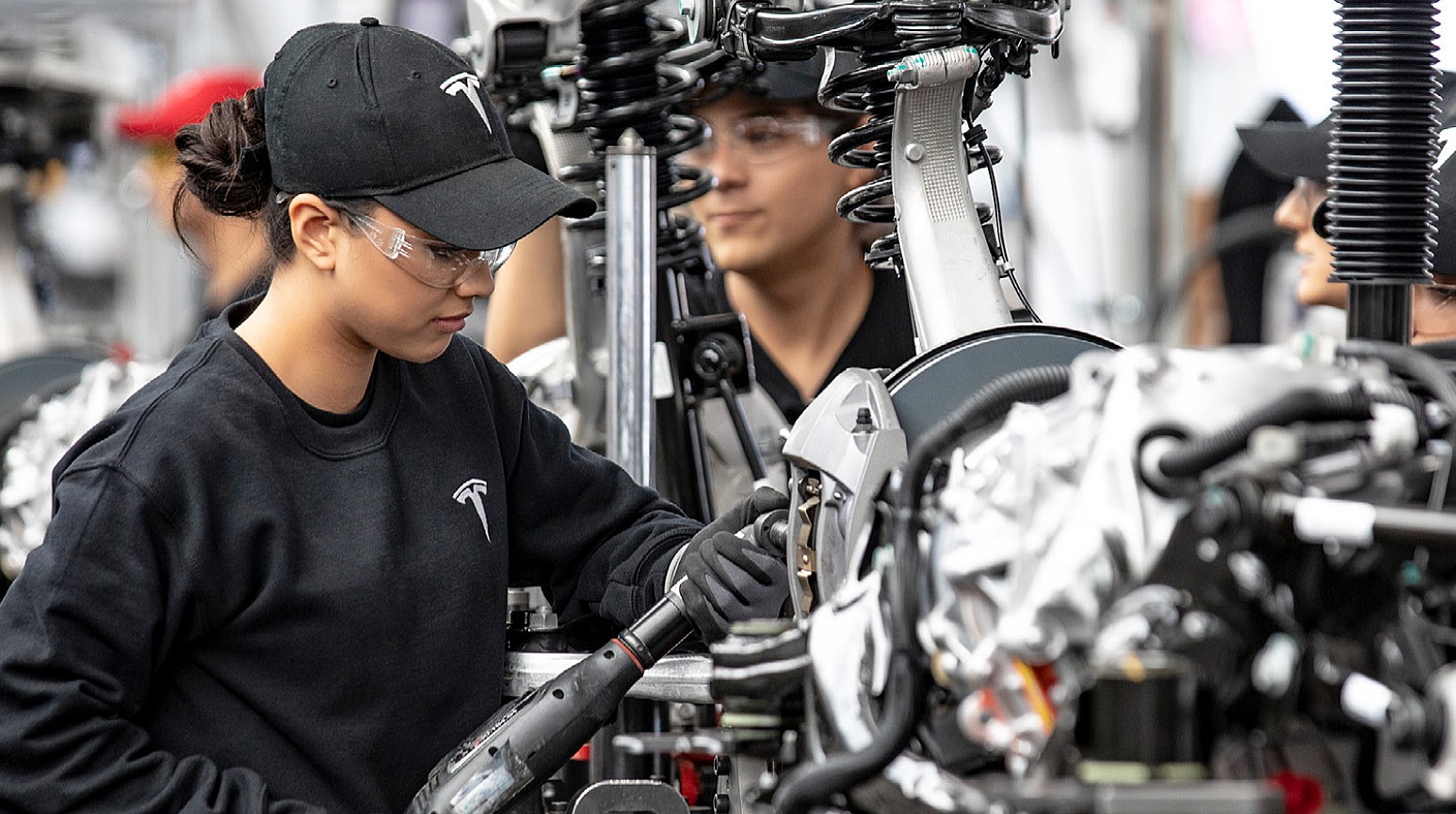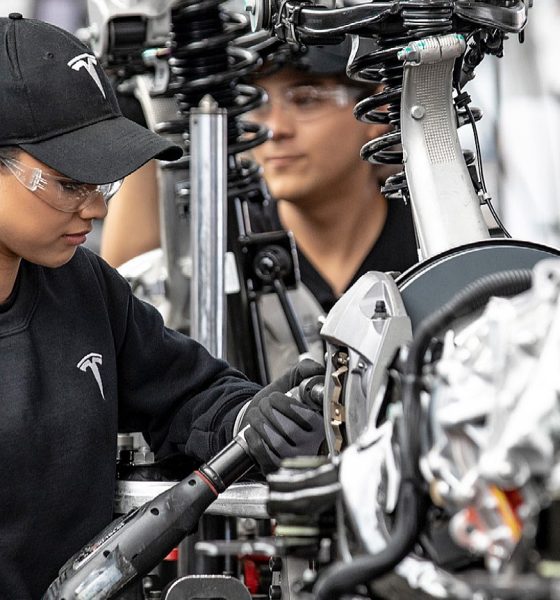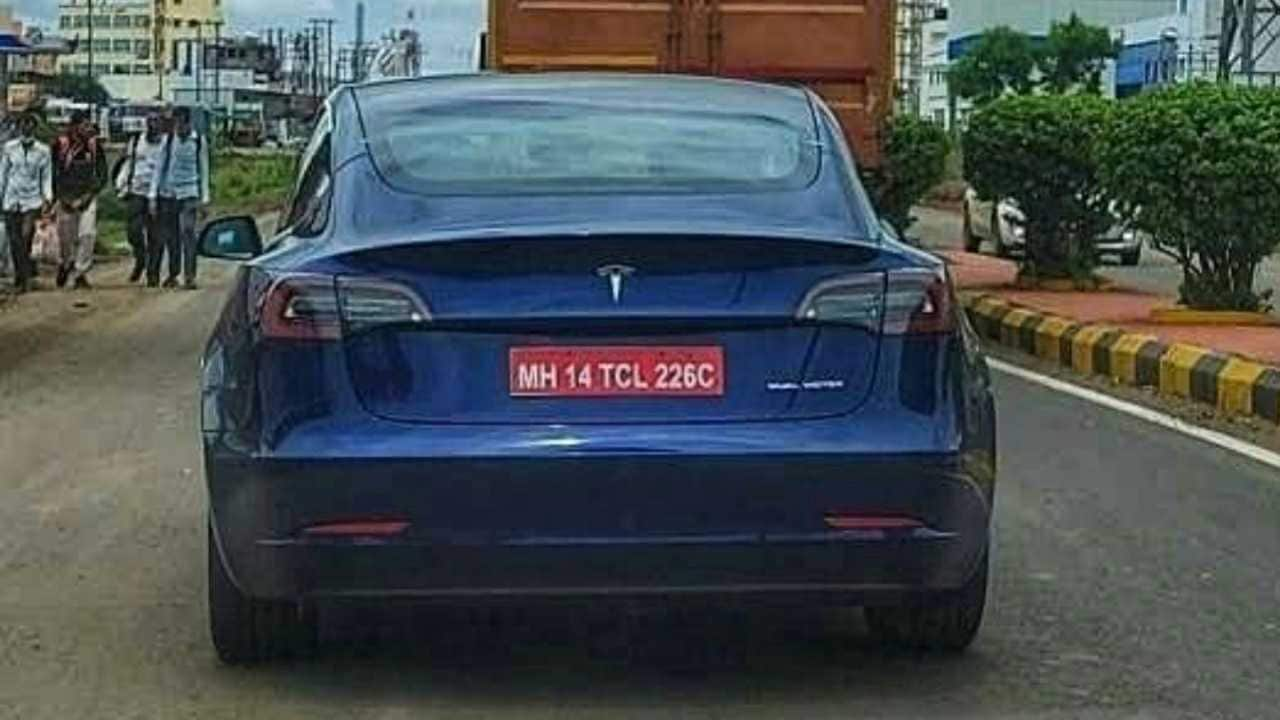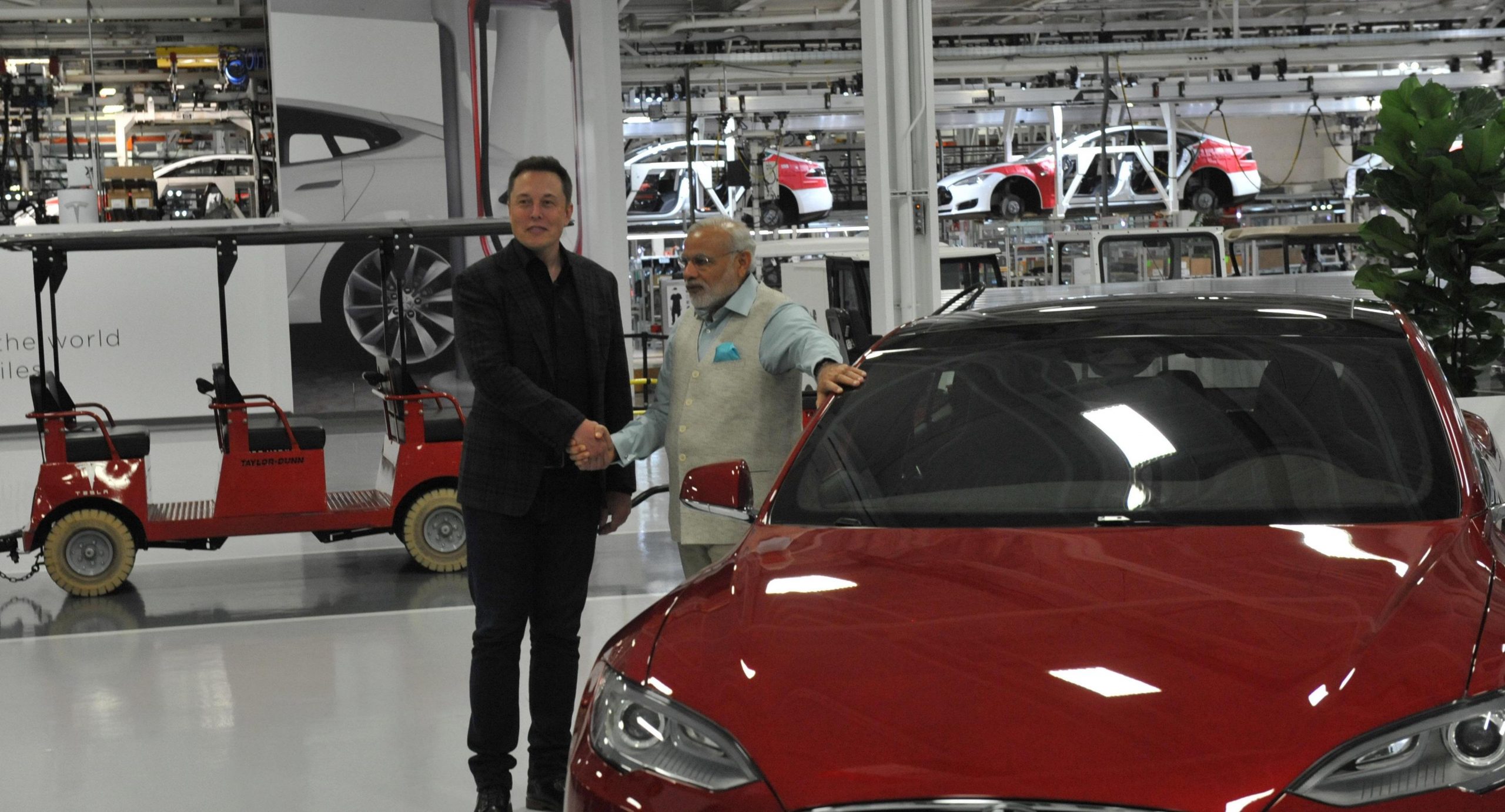

News
Tesla’s ‘challenges’ with India gov’t halt potential rescue of $27B manufacturing initiative
In 2014 when Narendra Modi officially became Prime Minister of India, his first message to people around the world was that, under his leadership, Indian manufacturing operations would become one of the world’s most robust. In September of the same year, Modi officially launched “Make In India,” a government initiative that encouraged companies from all corners of the globe to develop, produce, and assemble products in India with sizeable investments into manufacturing.
Five years after the initiative began, India’s manufacturing GDP was the lowest it had been in twenty years. It dropped 1.2% in the first five years following the launch of Make In India, although the growth rate of manufacturing globally increased 6.9% from 2014-15 to 2019-20.
Seven-and-a-half years later, Make In India is still a work in progress.
It was a disappointing start to the still active program, which has not been a complete failure. General Motors brought a $1 billion investment to a manufacturing facility in Maharashtra, the city where Tesla has been rumored to land with a potential factory of its own. Kia invested $1.1 billion in 2017 and has been producing vehicles at its factory in the Anantapur District since January 2019. Electrification, where the global automotive industry is heading, is still a weak point in India. Less than 1% of the country’s cars are electric.
Because of the extensive and massive $27 billion budget that has been set aside for these programs, India has tried to persuade companies to bring manufacturing to the country directly. With a sky-bound budget and thirst for local manufacturing, the confusion begins to set in: Why is Tesla, a company with a reputation for building the world’s best electric vehicles, that could likely build a manufacturing facility anywhere in the world, having so much trouble landing a deal in India to manufacture its vehicles?

A Tesla Model 3 testing in India (Credit: pune_exotics | Instagram)
The disconnect seems to be between Tesla’s requests and India’s needs. When Elon Musk, Tesla’s CEO, tweeted last night that there were still “challenges” when working with the Indian government, which had put the plans on hold once again, it seemed that the automaker’s requests for import duty reductions went to the wayside. An issue that seems to be Tesla’s most integral wish, import duty reduction has received support from some Indian politicians, noting that demand testing, which has been one key factor in the company’s attempts to enter India, cannot happen if duties are too high. “If they have to manufacture here, they need the numbers, and no one can test the market when you impose such high import duty on the vehicles,” Union Road Transport Minister Nitin Gadkari said in August.
If import taxation was not an issue, Tesla could use data already available to them to determine whether a Gigafactory would make sense in India. Spoiler alert: Tesla would never build a factory in India based on sales figures from the past ten years as very few people can afford them when import duties are involved. Any vehicle below $40,000 is subjected to 40% tax. Any vehicle more expensive than $40,000 receives a 100% tax, effectively doubling the price of the vehicle. Currently, Tesla has no vehicles in its lineup that are under the $40,000 price threshold.
The problem is those import duties are a huge issue. India seems to be against doing it, at least for now, even though the massive $27 billion budget would not be directly affected by an import tax rollback. In fact, that budget could still factor in tax losses from duty reductions. Perhaps the reasons linked to Tesla’s delayed entrance into India could be linked to the automaker’s lack of need for other companies due to its vertical integration. While this sounds far-fetched, the President of the Automotive Component Manufacturers Association (ACMA) said that localization is always a priority, and companies entering the market need to promote local manufacturing across the board, not just with the final product.
This would include everything from complex factors like semiconductors to other elements that are as simple as car seats. Tesla makes many of its parts in-house, including some microcontrollers and its automotive seats. “Tesla is absurdly vertically integrated compared to other auto companies or basically almost any company. We have a massive amount of internal manufacturing technology that we built ourselves,” Musk said in late 2020. “This makes it quite difficult to copy Tesla, which we’re not actually all that opposed to people copying us because you can’t do catalog engineering. You can’t just [say] I’ll pick up the supplier catalog, I’ll get one of those.”
This leaves India at a crossroads because, while Tesla would be a great benefit to the economy, manufacturing efforts, and employment, the company would not have as much to offer other sectors and companies as an automaker that is less vertically integrated. Reports have indicated that Tesla was planning to source components from local suppliers, but details regarding these rumors were slim.
India Prime Minister Narendra Modi visits the Tesla Fremont Factory in 2015.
But Tesla is far from a liability for any region. After launching Gigafactory Shanghai in China in early 2020, the factory has become Tesla’s biggest producer of EVs and accounted for nearly 52% of the automaker’s total deliveries for 2021. Despite the company’s vertical integration, which has increased gross margin on some Made-in-China Tesla vehicles to nearly 40%, the company has provided China with many economic benefits. The site will soon employ 9,000 people on the Model Y line alone after a confirmed expansion found in Tesla’s Environmental Impact Assessment for 2021. Gigafactory Shanghai will have 18,000 employees by the time the line expansion is completed. Additionally, it has helped encourage the adoption of EVs in Europe through exports, making the Model 3 the best-selling EV on the continent in 2021, with over 109,670 units sold. The next closest was the Renault Zoe, with 58,242 sales.
Whether Tesla will ever enter India seems to be a question that has no definitive answer currently. However, Tesla has been teasing a potential entrance for seven years, ever since Modi visited the Fremont factory in 2015. The long saga of Tesla and India will continue for now. With Tesla’s attractive status as an EV powerhouse, other countries might come knocking on the door, stealing an opportunity to increase India’s slumping reputation as a manufacturing hub. Considering the Made In India initiative’s backtrack in manufacturing GDP, perhaps new strategies should be tested.
I’d love to hear from you! If you have any comments, concerns, or questions, please email me at joey@teslarati.com. You can also reach me on Twitter @KlenderJoey, or if you have news tips, you can email us at tips@teslarati.com.

News
Tesla FSD fleet is nearing 7 billion total miles, including 2.5 billion city miles
As can be seen on Tesla’s official FSD webpage, vehicles equipped with the system have now navigated over 6.99 billion miles.

Tesla’s Full Self-Driving (Supervised) fleet is closing in on almost 7 billion total miles driven, as per data posted by the company on its official FSD webpage.
These figures hint at the massive scale of data fueling Tesla’s rapid FSD improvements, which have been quite notable as of late.
FSD mileage milestones
As can be seen on Tesla’s official FSD webpage, vehicles equipped with the system have now navigated over 6.99 billion miles. Tesla owner and avid FSD tester Whole Mars Catalog also shared a screenshot indicating that from the nearly 7 billion miles traveled by the FSD fleet, more than 2.5 billion miles were driven inside cities.
City miles are particularly valuable for complex urban scenarios like unprotected turns, pedestrian interactions, and traffic lights. This is also the difference-maker for FSD, as only complex solutions, such as Waymo’s self-driving taxis, operate similarly on inner-city streets. And even then, incidents such as the San Francisco blackouts have proven challenging for sensor-rich vehicles like Waymos.
Tesla’s data edge
Tesla has a number of advantages in the autonomous vehicle sector, one of which is the size of its fleet and the number of vehicles training FSD on real-world roads. Tesla’s nearly 7 billion FSD miles then allow the company to roll out updates that make its vehicles behave like they are being driven by experienced drivers, even if they are operating on their own.
So notable are Tesla’s improvements to FSD that NVIDIA Director of Robotics Jim Fan, after experiencing FSD v14, noted that the system is the first AI that passes what he described as a “Physical Turing Test.”
“Despite knowing exactly how robot learning works, I still find it magical watching the steering wheel turn by itself. First it feels surreal, next it becomes routine. Then, like the smartphone, taking it away actively hurts. This is how humanity gets rewired and glued to god-like technologies,” Fan wrote in a post on X.
News
Tesla starts showing how FSD will change lives in Europe
Local officials tested the system on narrow country roads and were impressed by FSD’s smooth, human-like driving, with some calling the service a game-changer for everyday life in areas that are far from urban centers.

Tesla has launched Europe’s first public shuttle service using Full Self-Driving (Supervised) in the rural Eifelkreis Bitburg-Prüm region of Germany, demonstrating how the technology can restore independence and mobility for people who struggle with limited transport options.
Local officials tested the system on narrow country roads and were impressed by FSD’s smooth, human-like driving, with some calling the service a game-changer for everyday life in areas that are far from urban centers.
Officials see real impact on rural residents
Arzfeld Mayor Johannes Kuhl and District Administrator Andreas Kruppert personally tested the Tesla shuttle service. This allowed them to see just how well FSD navigated winding lanes and rural roads confidently. Kruppert said, “Autonomous driving sounds like science fiction to many, but we simply see here that it works totally well in rural regions too.” Kuhl, for his part, also noted that FSD “feels like a very experienced driver.”
The pilot complements the area’s “Citizen Bus” program, which provides on-demand rides for elderly residents who can no longer drive themselves. Tesla Europe shared a video of a demonstration of the service, highlighting how FSD gives people their freedom back, even in places where public transport is not as prevalent.
What the Ministry for Economic Affairs and Transport says
Rhineland-Palatinate’s Minister Daniela Schmitt supported the project, praising the collaboration that made this “first of its kind in Europe” possible. As per the ministry, the rural rollout for the service shows FSD’s potential beyond major cities, and it delivers tangible benefits like grocery runs, doctor visits, and social connections for isolated residents.
“Reliable and flexible mobility is especially vital in rural areas. With the launch of a shuttle service using self-driving vehicles (FSD supervised) by Tesla in the Eifelkreis Bitburg-Prüm, an innovative pilot project is now getting underway that complements local community bus services. It is the first project of its kind in Europe.
“The result is a real gain for rural mobility: greater accessibility, more flexibility and tangible benefits for everyday life. A strong signal for innovation, cooperation and future-oriented mobility beyond urban centers,” the ministry wrote in a LinkedIn post.
News
Tesla China quietly posts Robotaxi-related job listing
Tesla China is currently seeking a Low Voltage Electrical Engineer to work on circuit board design for the company’s autonomous vehicles.

Tesla has posted a new job listing in Shanghai explicitly tied to its Robotaxi program, fueling speculation that the company is preparing to launch its dedicated autonomous ride-hailing service in China.
As noted in the listing, Tesla China is currently seeking a Low Voltage Electrical Engineer to work on circuit board design for the company’s autonomous vehicles.
Robotaxi-specific role
The listing, which was shared on social media platform X by industry watcher @tslaming, suggested that Tesla China is looking to fill the role urgently. The job listing itself specifically mentions that the person hired for the role will be working on the Low Voltage Hardware team, which would design the circuit boards that would serve as the nervous system of the Robotaxi.
Key tasks for the role, as indicated in the job listing, include collaboration with PCB layout, firmware, mechanical, program management, and validation teams, among other responsibilities. The role is based in Shanghai.
China Robotaxi launch
China represents a massive potential market for robotaxis, with its dense urban centers and supportive policies in select cities. Tesla has limited permission to roll out FSD in the country, though despite this, its vehicles have been hailed as among the best in the market when it comes to autonomous features. So far, at least, it appears that China supports Tesla’s FSD and Robotaxi rollout.
This was hinted at in November, when Tesla brought the Cybercab to the 8th China International Import Expo (CIIE) in Shanghai, marking the first time that the autonomous two-seater was brought to the Asia-Pacific region. The vehicle, despite not having a release date in China, received a significant amount of interest among the event’s attendees.








